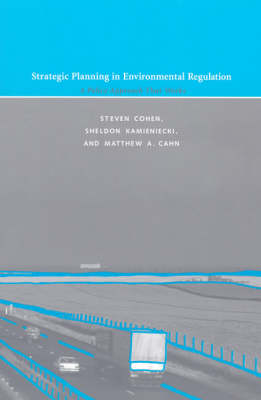Strategic Planning in Environmental Regulation introduces an approach to environmental regulatory planning founded on a creative, interactive relationship between business and government. The authors argue that regulation -- often too narrowly defined as direct, command-and-control standard setting and enforcement -- should include the full range of activities intended to influence private behavior to conform to public goals. The concept of strategic regulatory planning that the book introduces provides a model for designing more effective environmental regulation. Strategic planning requires careful consideration of the regulatory objectives, the target audiences for regulation, and the characteristics of the regulatory agency.The two important case studies in the book -- one on the use of the gasoline additive MTBE and the other on the cleanup of underground storage tanks (USTs) -- apply the model, compare the approaches and results, and illustrate the advantages of a strategic approach.The case of MTBE -- in which an additive intended to produce cleaner-burning gasoline was found to contribute to both air and groundwater pollution -- shows the drawbacks of top-down regulation by fragmented regulatory agencies.
The success of the UST cleanup, in contrast, highlights a unique, strategic, and results-oriented approach to policy implementation. These two cases demonstrate why regulation works better in some cases than others, and the alternative approaches to regulation described in the book promise to promote the achievement of environmental quality goals.
- ISBN10 0262033410
- ISBN13 9780262033411
- Publish Date 9 December 2005
- Publish Status Out of Print
- Out of Print 14 May 2013
- Publish Country US
- Publisher MIT Press Ltd
- Imprint MIT Press
- Format Hardcover
- Pages 304
- Language English
